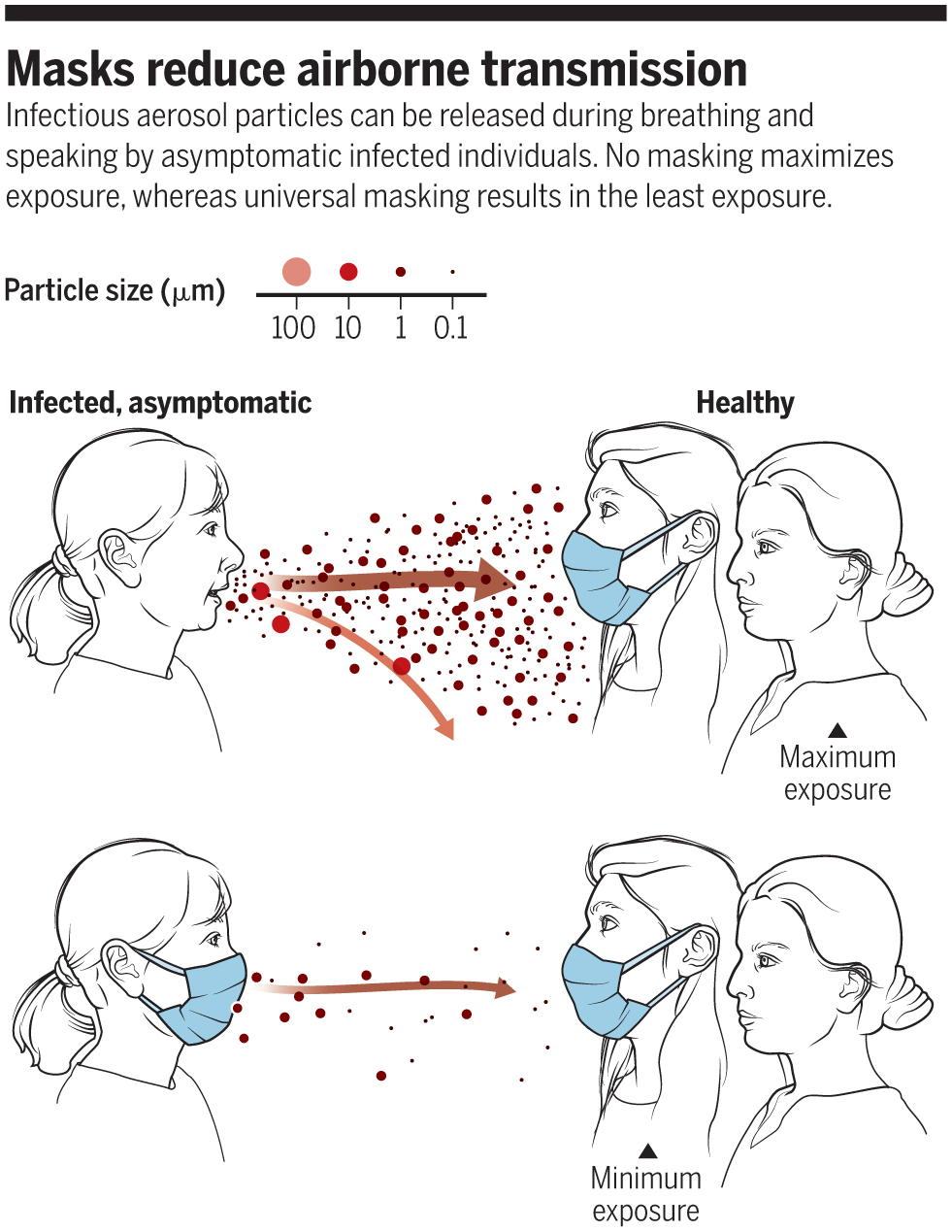SARS-CoV-2 circulates in indoor air
New research highlights the extent of the new coronavirus transmission by aerosol. Droplets smaller than 100 μm containing viral particles can remain suspended in the air for a long time and be inhaled.
Efforts are needed to allow more outdoor activities and ventilating indoor areas
A letter published in the journal Science highlights the extent of the new coronavirus transmission by aerosol. Droplets smaller than 100 μm containing viral particles can remain suspended in the air for a long time and be inhaled.
Made in cooperation with our partners at esanum.it
There is conclusive evidence that inhalation is one of the main routes of transmission of the SARS-CoV-2 virus, responsible for COVID-19. There is an urgent need to harmonize discussions across disciplines on how the virus is transmitted to ensure the most effective control strategies and provide clear and consistent guidance to the population. To do this, we need to clarify terminology and distinguish between aerosols and droplets using the 100 μm size threshold, instead of the historical 5 μm1. This dimension more effectively distinguishes their aerodynamic behavior, their ability to be inhaled, and the effectiveness of the interventions.
Viruses in droplets (larger than 100 μm) typically fall to the ground within 2m of the source within seconds and can be sprayed as tiny cannonballs on nearby individuals. Due to their limited range of actions, physical removal reduces exposure to these droplets.
Viruses in aerosols (less than 100 μm) can remain suspended in the air for many seconds or hours, similar to smoke, and be inhaled. They are highly concentrated near an infected person, so they can infect people more easily in the immediate vicinity. But aerosols containing infectious viruses2 can also travel more than 2 meters away from the infected person and accumulate in the air inside poorly ventilated enclosed spaces, also causing situations of maximum spread3.
People with COVID-19, many of them asymptomatic, release thousands of virus-laden aerosols and many fewer droplets when they breathe and speak4-6. Therefore, they are much more likely to inhale aerosols than to come into contact with droplets/droplets7. Attention must be shifted to protection against airborne transmission. In addition to the contagion containment measures already taken, such as the use of masks, social distancing, and handwashing, public health professionals should be urged to focus their efforts on moving as many outdoor activities as possible, to improve indoor air by using ventilation and filtration systems, to protect high-risk workers8.
Notes:
1. National Academies of Science, Engineering, and Medicine, “Video 31—CQ1 reflection and syntheses: Identifying opportunities and gaps on the path ahead by Kim Prather” (Airborne Transmission of SARS-CoV-2: A Virtual Workshop, 26 to 27 August 2020); www.nationalacademies.org/event/08-26-2020/airborne-transmission-of-sars-cov-2-a-virtual-workshop.
2. J. A. Lednicky et al., Int. J. Infect. Dis. S1201-9712(20)30739-6 (2020). doi:10.1016/j.ijid.2020.09.025pmid:32949774
3. S. L. Miller et al., Indoor Air (2020). doi:10.1111/ina.12751pmid:32979298
4. K. A. Prather, C. C. Wang, R. T. Schooley, Science 368, 1422 (2020). doi:10.1126/science.abc6197pmid:32461212
5. V. Stadnytskyi, C. E. Bax, A. Bax, P. Anfinrud, Proc. Natl. Acad. Sci. U.S.A. 117, 11875 (2020). doi:10.1073/pnas.2006874117pmid:32404416
6. J. Ma et al., Clin. Infect. Dis. ciaa1283 (2020). doi:10.1093/cid/ciaa1283pmid:32857833
7. W. Chen, N. Zhang, J. Wei, H.-L. Yen, Y. Li, Build. Environ. 176, 106859 (2020). doi:10.1016/j.buildenv.2020.106859
8. L. Morawska et al., Environ. Int. 142, 105832 (2020). doi:10.1016/j.envint.2020.105832pmid:32521345
Source: Kimberly A. Prather, Linsey C. Marr, Robert T. Schooley, Melissa A. McDiarmid, Mary E. Wilson, Donald K. Milton. Airborne transmission of SARS-CoV-2. Science 05 Oct 2020: eabf0521. DOI: 10.1126/science.abf0521
